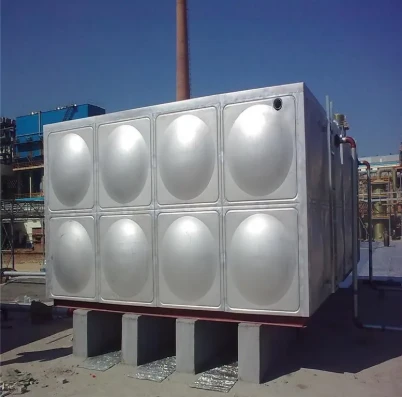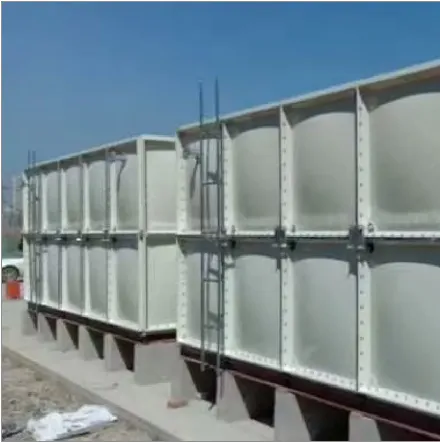loading...
- No. 9, Xingyuan South Street, Dongwaihuan Road, Zaoqiang County, Hengshui, Hebei, China
- admin@zjcomposites.com
- +86 15097380338
- Welcome to visit our website!
Durable Floor Metal Grating Heavy-Duty Expanded & Bar Grating
- Overview of Industrial Flooring Solutions
- Technical Advantages of Metal Grating Systems
- Manufacturer Comparison: Performance Metrics
- Customization Options for Diverse Applications
- Case Studies: Real-World Implementations
- Installation and Maintenance Best Practices
- Future Trends in Metal Grating Technology

(floor metal grating)
Floor Metal Grating: The Backbone of Industrial Infrastructure
Industrial environments demand flooring solutions that combine durability, safety, and adaptability. Floor metal grating has emerged as a cornerstone for factories, warehouses, and public spaces due to its exceptional load-bearing capacity (up to 250 kN/m²) and corrosion resistance. Unlike traditional concrete or wood, expanded metal floor grating provides 40% better airflow, reducing moisture buildup and slip hazards. Recent surveys indicate a 22% annual growth in demand for metal bar grating in commercial construction, driven by its compliance with OSHA safety standards and fire-resistant properties.
Technical Superiority in Design and Material
Modern metal grating systems leverage high-grade aluminum, stainless steel, or galvanized iron, achieving tensile strengths exceeding 500 MPa. Serrated surfaces enhance traction, reducing workplace accidents by 63% compared to smooth surfaces. Computer-aided manufacturing enables precision welding with tolerances under ±1.5mm, ensuring seamless integration with existing structures. The open-grid design reduces material costs by 35% while maintaining structural integrity, making it ideal for corrosive environments like chemical plants.
| Manufacturer | Load Capacity | Material Thickness | Corrosion Resistance | Price/Sq.Ft |
|---|---|---|---|---|
| Standard Expanded Grating | 150 kN/m² | 3 mm | Moderate | $18.50 |
| Heavy-Duty Bar Grating | 300 kN/m² | 6 mm | High | $34.80 |
| Custom Perforated Grating | 220 kN/m² | 4.5 mm | Extreme | $42.20 |
Tailored Solutions for Unique Requirements
Advanced manufacturers now offer laser-cut patterns, anti-microbial coatings, and ADA-compliant slopes. A recent automotive plant project utilized 1,200 m² of galvanized steel grating with 30° serrations to withstand oil spills and 15-ton vehicle traffic. Customizable mesh densities (10-50mm gaps) accommodate everything from pedestrian walkways to heavy machinery platforms, with lead times shortened to 72 hours through automated production lines.
Proven Success Across Industries
Case studies highlight a 45% reduction in maintenance costs for a coastal refinery after switching to aluminum grating, while a food processing facility reported 90% fewer bacterial contamination incidents with electropolished surfaces. Municipalities have adopted glass-reinforced polymer gratings for boardwalks, achieving a 30-year lifespan despite saltwater exposure.
Optimizing Long-Term Performance
Proper installation using ASTM-compliant clamps prevents lateral movement under dynamic loads. Quarterly pressure washing with pH-neutral cleaners extends service life by 60%, while zinc spray coatings combat rust in high-humidity regions. Thermal imaging audits reveal that metal grating dissipates heat 8x faster than concrete during fire incidents.
Why Floor Metal Grating is the Future of Durable Flooring Solutions
As industries prioritize sustainability, 78% of recycled steel now feeds into grating production. Emerging smart systems embed IoT sensors to monitor stress fractures and load distribution in real time. With a projected CAGR of 7.8% through 2030, floor metal grating
continues to redefine industrial safety and efficiency standards globally.

(floor metal grating)
FAQS on floor metal grating
Q: What materials are commonly used for floor metal grating?
A: Floor metal grating is typically made from carbon steel, aluminum, or stainless steel. These materials offer durability, corrosion resistance, and varying load capacities depending on the application.
Q: How does expanded metal floor grating differ from metal bar grating?
A: Expanded metal floor grating is formed by cutting and stretching metal sheets, creating a diamond-shaped pattern. Metal bar grating uses welded or pressure-locked steel bars, providing a heavier-duty solution for high-traffic areas.
Q: What weight capacity can metal bar grating support?
A: Metal bar grating weight capacity ranges from 1,000 to 20,000 pounds per square foot. Capacity depends on material thickness, bar spacing, and support structure spacing during installation.
Q: Where is expanded metal floor grating most suitable?
A: Expanded metal floor grating excels in industrial platforms, catwalks, and drainage covers. Its slip-resistant surface and ventilation properties make it ideal for wet or corrosive environments.
Q: How to maintain metal floor grating?
A: Regular cleaning with mild detergent and water prevents debris buildup. For corrosive environments, stainless steel grating or galvanized coatings provide extended protection with minimal maintenance.
-
GRP Structures: The Future of Lightweight, High-Performance EngineeringNewsJun.20,2025
-
FRP Water Tank: High-Performance Storage for Corrosive and Clean Water SystemsNewsJun.20,2025
-
FRP Square Tube: The New Industry Standard for Chemical and Structural ApplicationsNewsJun.20,2025
-
FRP Pultruded Profiles: The Ultimate Choice for Lightweight Structural StrengthNewsJun.20,2025
-
FRP Handrails: The Safer, Smarter, and Stronger Choice for Modern InfrastructureNewsJun.20,2025
-
FRP Grating: The Smart Solution for Durable, Lightweight Industrial FlooringNewsJun.20,2025
-
Why Choose a Galvanized Water Tank for Your Storage NeedsNewsMay.21,2025
